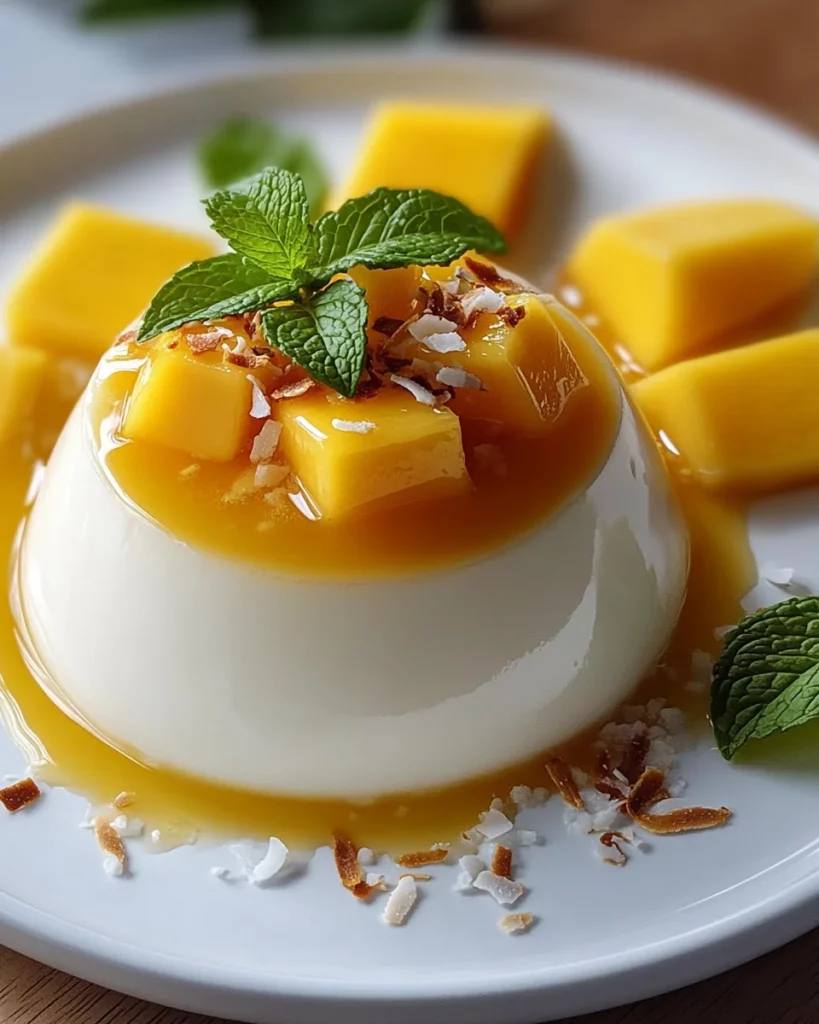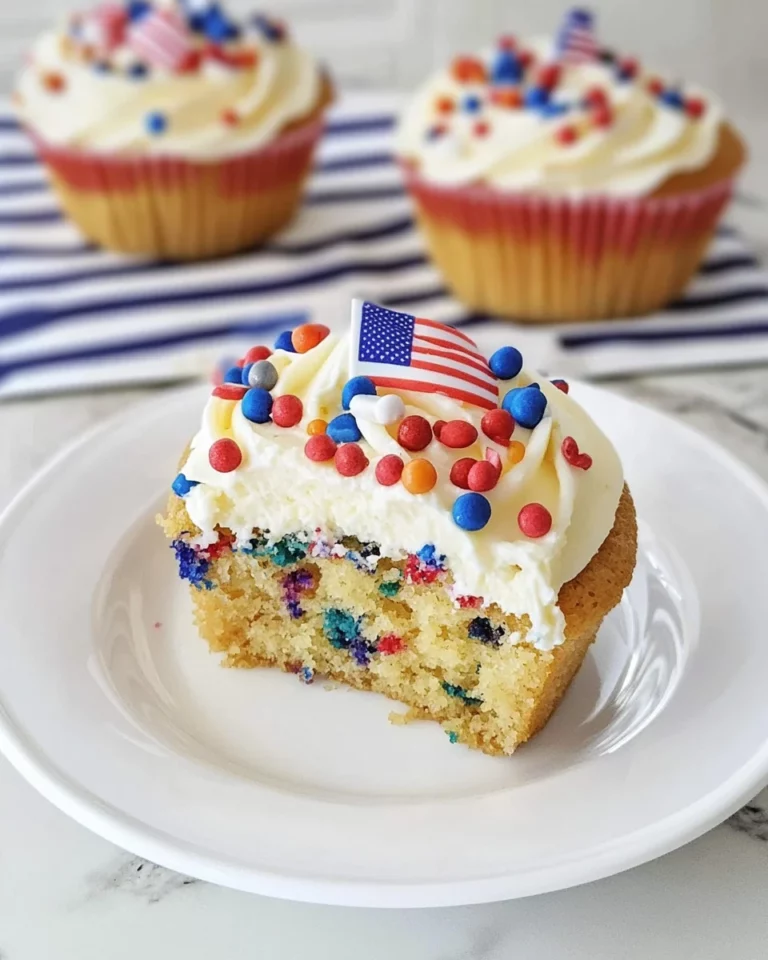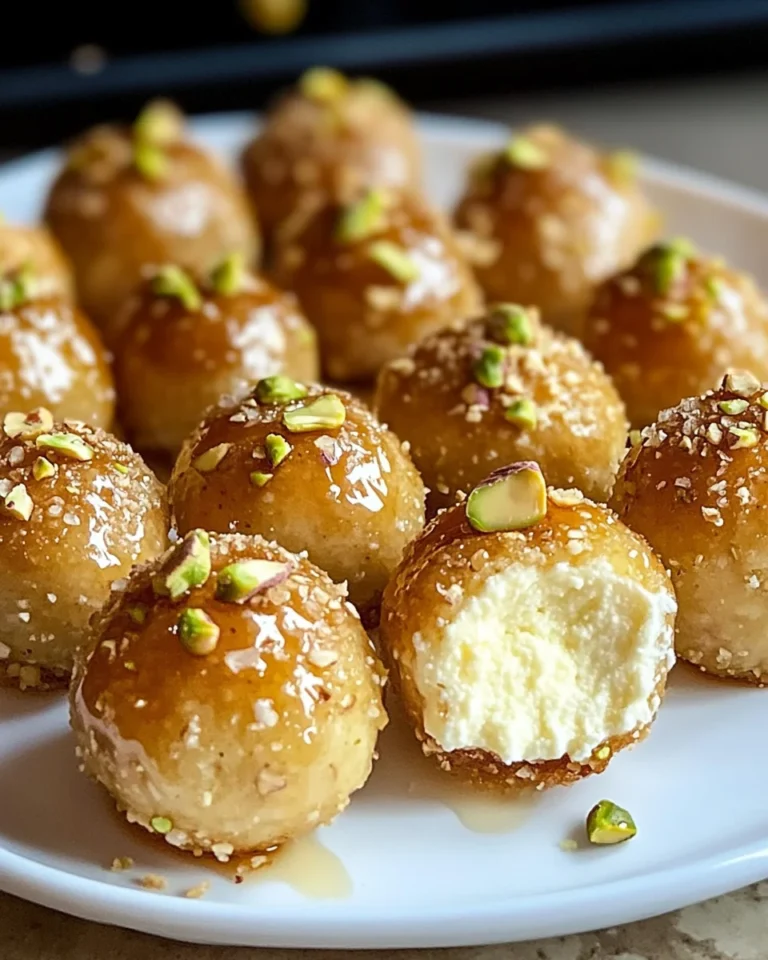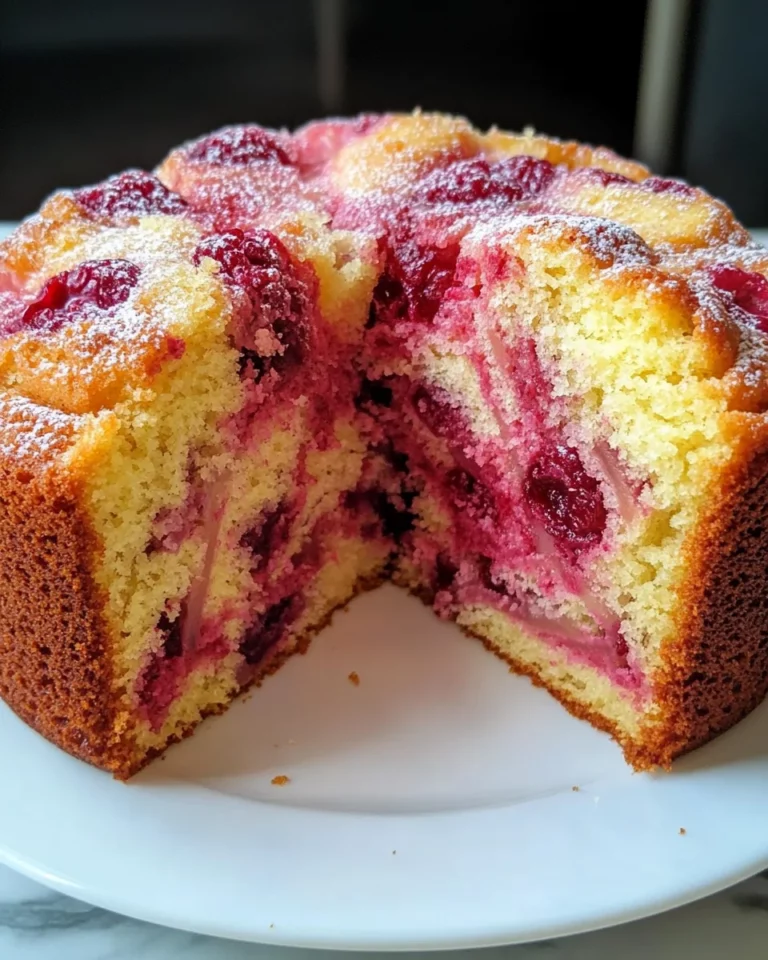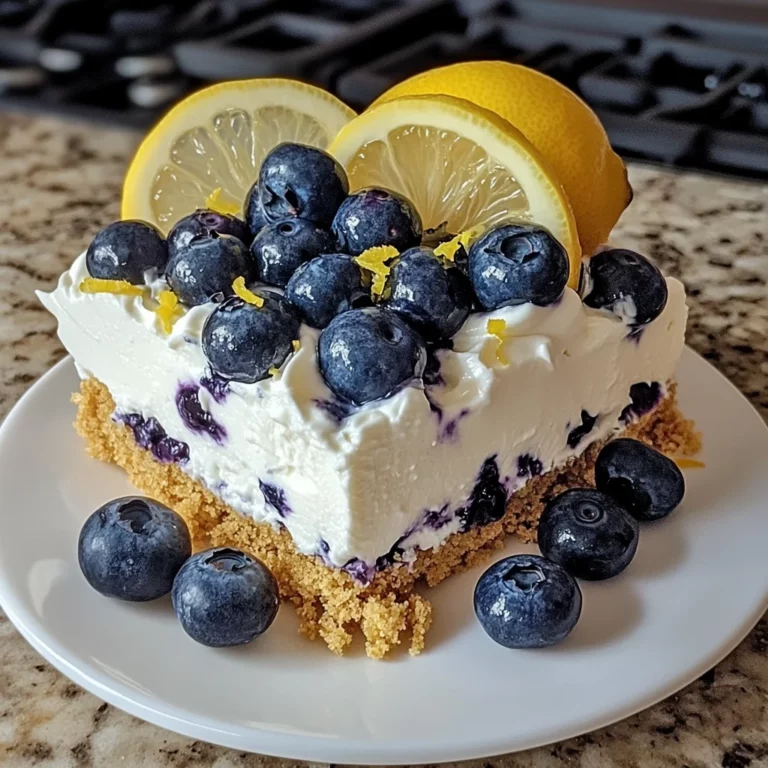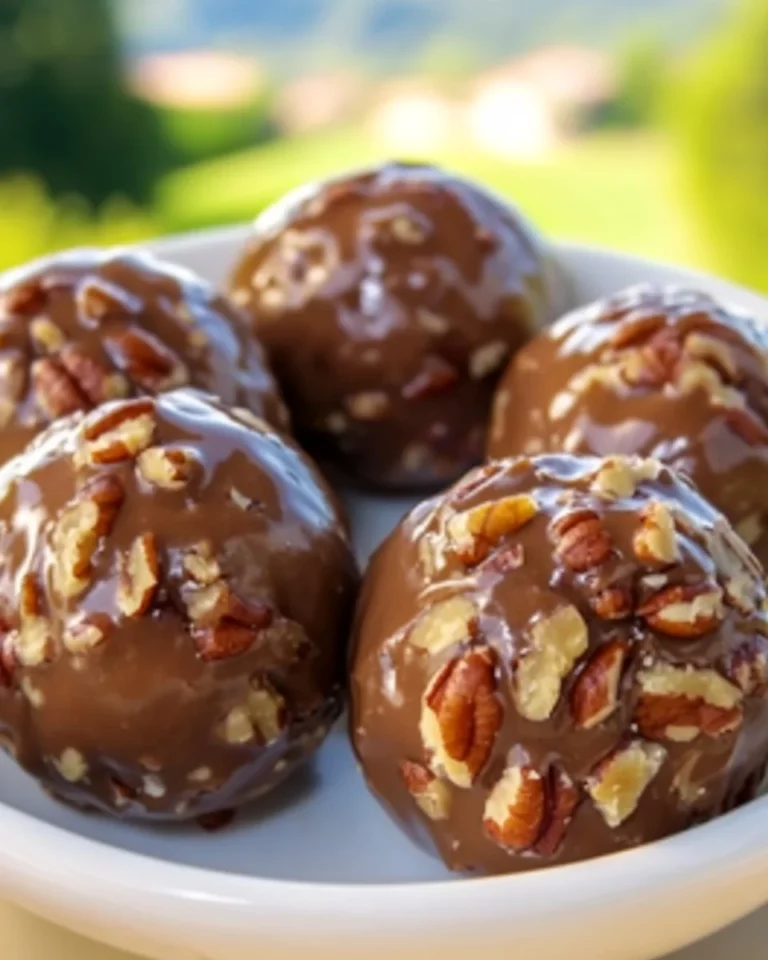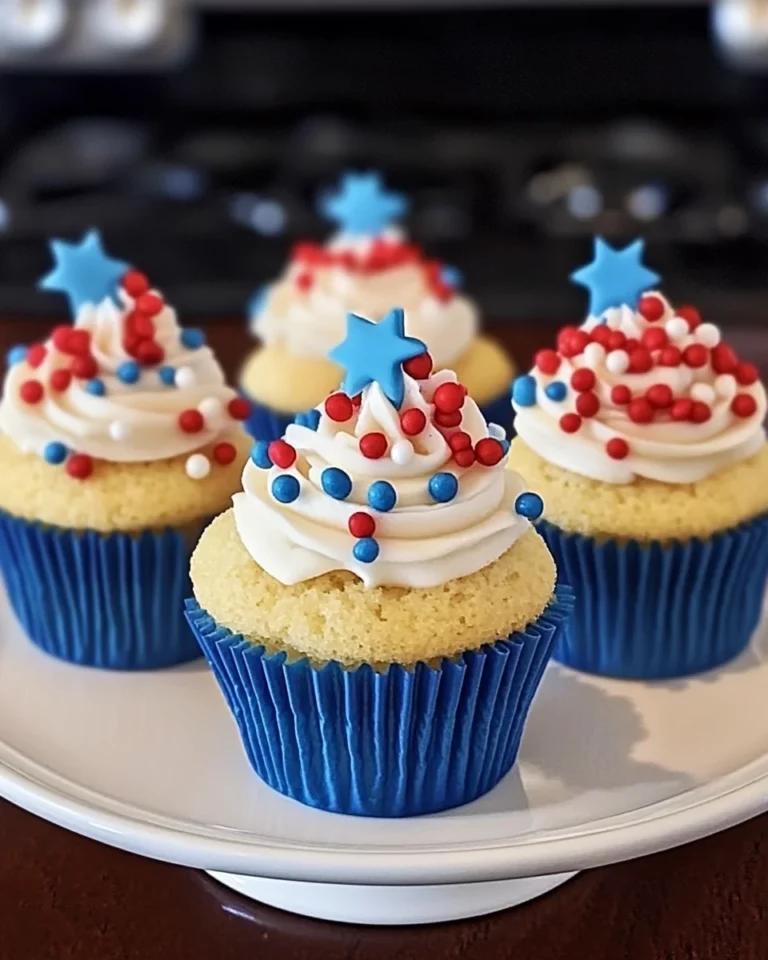Mango Coconut Panna Cotta
Introduction to Mango Coconut Panna Cotta
As I leaned over my kitchen counter, the sweet scent of ripe mangoes wafted through the air, an irresistible invitation to indulge in a little culinary adventure. Introducing my Mango Coconut Panna Cotta—this delightful tropical treat is not just a dessert; it’s a quick solution for those busy days when we crave a little break. Creamy coconut layers gracefully embrace luscious mango puree, creating the kind of refreshment perfect for any occasion. Whether it’s a dinner party or a cozy family gathering, this recipe is bound to impress your loved ones (and yourself!) with minimal fuss.
Why You’ll Love This Mango Coconut Panna Cotta
This Mango Coconut Panna Cotta is your new best friend in the kitchen! It’s incredibly easy to whip up, taking only 15 minutes of prep. Plus, the taste is nothing short of paradise think creamy coconut and vibrant mango dancing on your palate. It’s the ideal dessert for busy moms or professionals as it can be made ahead of time. Just set it in the fridge, and you’re free to enjoy life!
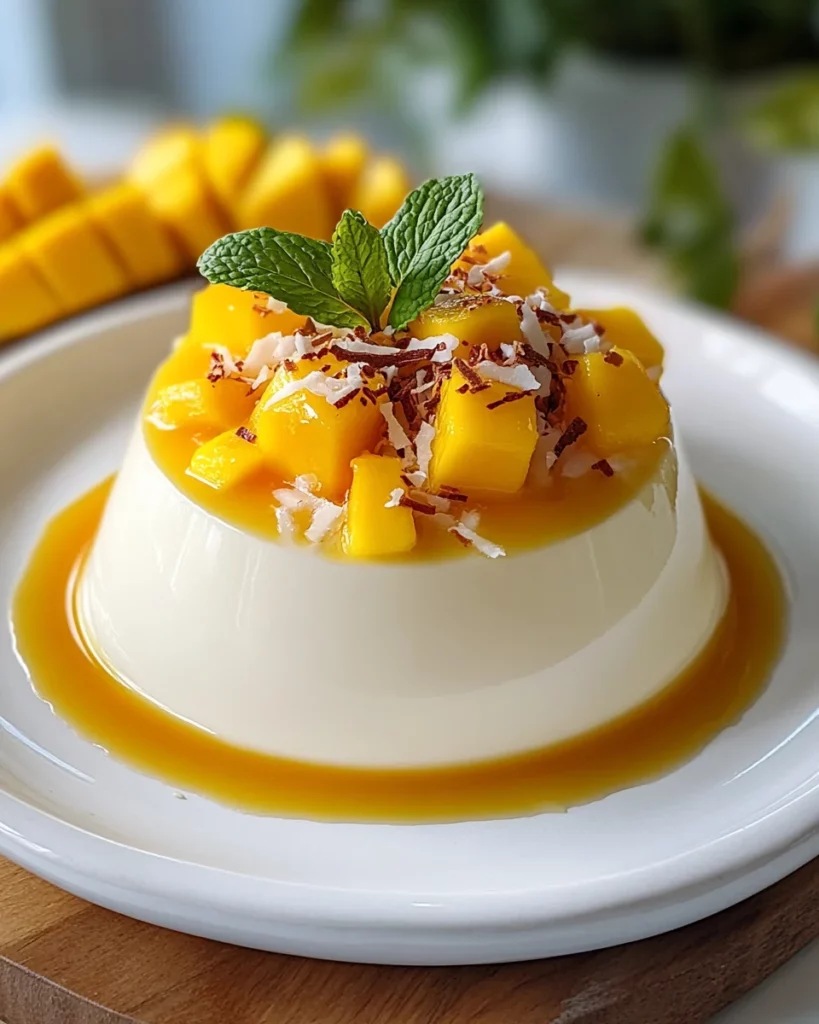
Ingredients for Mango Coconut Panna Cotta
Gathering the right ingredients is half the fun, and for Mango Coconut Panna Cotta, you’ll need some tropical staples that are easy to find. Let’s dive into what makes this dessert shine:
- Unflavored gelatin: This is what gives your panna cotta its silky, set texture. Look for high-quality brands for the best results.
- Cold water: Just a bit, to bloom the gelatin. It helps the gelatin dissolve perfectly when it’s added later.
- Full-fat coconut milk: The star of this dessert! It brings creaminess and rich coconut flavor. You can find it in cans at most grocery stores.
- Heavy cream: This adds an extra layer of richness. You can substitute with coconut cream for a more intense coconut flavor.
- Granulated sugar: Essential for balancing the taste and enhancing that tropical flavor. Adjust to your sweetness preference!
- Vanilla extract: A touch of vanilla deepens the flavor, rounding everything out beautifully.
- Salt: Just a pinch is enough to elevate all those delicious flavors.
- Ripe mangoes: Fresh and sweet, these provide the gorgeous mango puree that contrasts perfectly with the creamy base. Choose overripe mangoes for the best sweetness.
- Fresh lime juice: A must for a hint of zesty brightness. It complements the mango beautifully!
- Lime zest: This will amplify that lime flavor, adding fragrant notes to the dish.
- Garnishes: Fresh mango slices, toasted coconut flakes, and mint leaves add charm and a vibrant finish to the dish.
Detailed quantities for each ingredient can be found at the bottom of this article, ready for printing. Happy prepping!
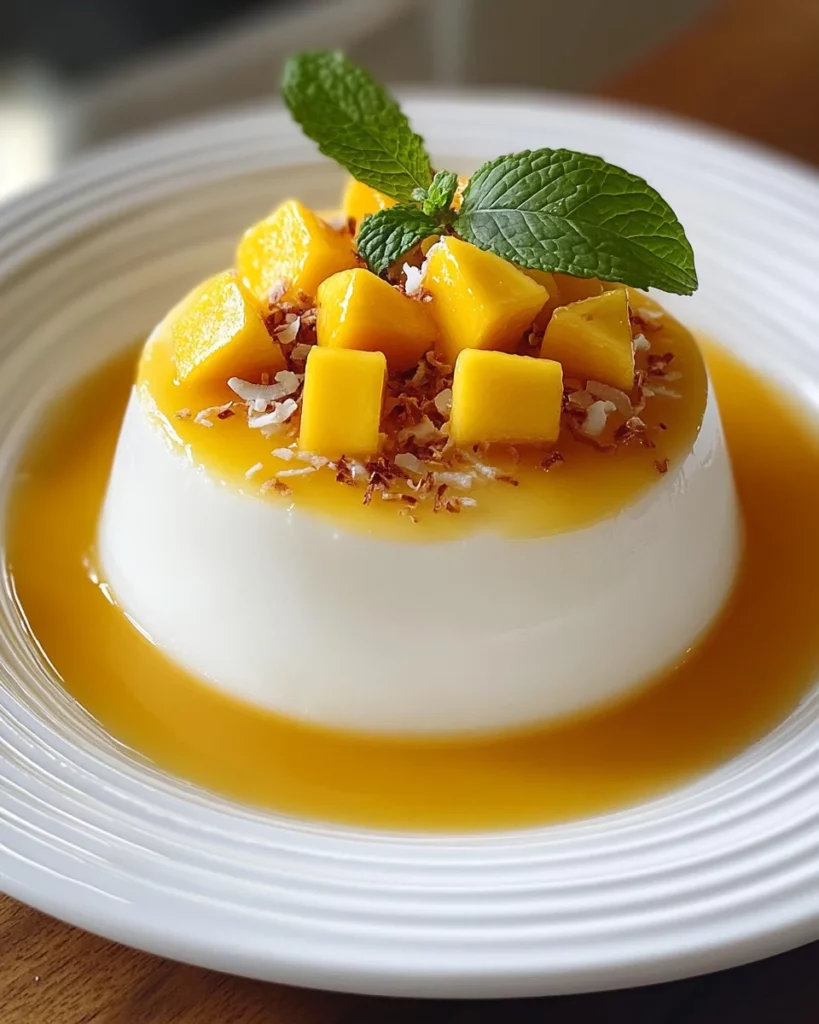
How to Make Mango Coconut Panna Cotta
Now that we’ve gathered our tropical ingredients, let’s embark on this sweet journey! Making Mango Coconut Panna Cotta is a breeze, and I promise you’ll feel like a culinary genius when you serve it. Follow these simple steps, and enjoy the delight of crafting this creamy masterpiece.
Step 1: Bloom the Gelatin
Start by sprinkling your unflavored gelatin over cold water in a small bowl. Let it sit for about five minutes. This step makes the gelatin spongy and ready to work its magic. You can’t rush this part—it’s like waking up your sleepy ingredients!
Step 2: Make the Coconut Base
In a small saucepan, heat half a cup of coconut milk until it’s hot but not boiling. Then, take it off the heat and whisk in the bloomed gelatin until it fully dissolves. This warm mixture will form the base of your creamy pudding—trust me, it’s worth the wait!
Step 3: Combine the Coconut Layer
In a large mixing bowl, whisk together the rest of the coconut milk, heavy cream, sugar, vanilla extract, and a pinch of salt. Then, pour in the warm coconut milk and gelatin mixture. Keep whisking until the sugar dissolves completely, blending those beautiful flavors together into a luscious coconut dream.
Step 4: Create Your Mango Puree
Now, it’s mango time! Blend the diced ripe mangoes with fresh lime juice, sugar, and lime zest until smooth. Taste it as you go—this is your chance to adjust the sweetness. The vibrant color and scent will have you dreaming of tropical beaches!
Step 5: First Layer Magic
Ready for the first layer? Divide the coconut mixture among your serving glasses or ramekins, filling them about halfway. Refrigerate for about two hours. You want the first layer to be set but still slightly tacky on top, which will help the mango layer stick.
Step 6: Add the Mango Layer
Once that coconut layer is just right, it’s time for the mango magic! Spoon the mango puree over each set coconut layer. If you’re feeling fancy, create gentle swirls with a toothpick for a visually stunning effect. Your dessert is starting to take shape!
Step 7: The Final Chill
Now, it’s time to let your masterpiece chill out. Refrigerate for at least three more hours, but if you can wait overnight, do it! This resting time helps the flavors meld beautifully together, ensuring a silky smooth texture.
Step 8: Serve Like a Pro
When you’re ready to serve, bring out your gorgeous panna cotta and garnish each serving with fresh mango slices, toasted coconut flakes, and a sprig of mint. This final touch adds visual flair and a little extra flavor. Your guests will think you’ve just returned from a tropical getaway!
Tips for Success
- Always bloom the gelatin properly; it’s crucial for that silky texture.
- Keep an eye on the coconut milk—don’t let it boil!
- Let the first layer sit until it’s tacky before adding the mango puree.
- Use ripe mangoes for the sweetest puree; trust your taste buds!
- Chilling overnight is key to the best flavor and texture.
Equipment Needed
- Mixing bowls: A big bowl for the coconut mixture and a smaller one for blooming the gelatin.
- Small saucepan: Ideal for heating the coconut milk; you can substitute with a microwave if short on time.
- Whisk: Essential for blending ingredients smoothly; a fork will do in a pinch!
- Blender: Needed for making the mango puree; alternatives include an immersion blender or even mashing by hand for a rustic touch.
- Ramekins or serving glasses: Use whatever you have on hand—mason jars work beautifully too!
Variations
- Flavored Coconut: Add a splash of coconut extract for an extra boost of coconut flavor.
- Fruit Fusion: Experiment with other fruits like passionfruit or pineapple in place of mango for a different tropical twist.
- Plant-Based Version: Substitute the heavy cream with more coconut milk or a plant-based cream to keep it vegan-friendly.
- Low-Sugar Adaptation: Use a sugar substitute like stevia or monk fruit sweetener to cut down on sugar without sacrificing flavor.
- Nutty Delight: Add a handful of chopped macadamia nuts or almonds on top for a delightful crunch.
Serving Suggestions
- Pair with Fresh Fruits: Serve alongside slices of ripe kiwi or juicy pineapple for a colorful plate.
- Drink Match: A chilled glass of coconut water or a tropical fruit smoothie complements the panna cotta beautifully.
- Presentation Tips: Arrange the panna cotta on a vibrant plate and drizzle with extra mango puree for added flair!
FAQs about Mango Coconut Panna Cotta
As I’ve whipped up countless batches of Mango Coconut Panna Cotta, I’ve noticed some common questions popping up among fellow home cooks. Let’s dive into those inquiries, so you can feel confident making this tropical delight!
Can I use frozen mango for the puree? Absolutely! Frozen mango works just fine. Just make sure to thaw it completely before blending. This makes it a convenient option, especially when fresh mangoes aren’t in season.
How do I store leftover panna cotta? Keep any leftovers covered in the fridge for up to three days. The flavors will meld together beautifully, making the panna cotta even more delicious!
Can I make this dessert vegan? You bet! Simply swap the heavy cream for coconut cream, and ensure the gelatin is plant-based. Agar-agar is a great option if you want a vegan setting agent.
What can I substitute if I’m out of gelatin? If gelatin is out of reach, you can use agar-agar as a vegetarian alternative. Just follow the instructions on the package for blooming and dissolving.
Why is my panna cotta not setting correctly? If it’s not setting, it might be due to the gelatin not blooming enough or not being mixed properly. Double-check each step to ensure the right consistency!
Final Thoughts
Creating Mango Coconut Panna Cotta is more than just making a dessert; it’s about bringing a little slice of tropical joy into your home. Each silky layer speaks to the love and care you put into it, transforming simple ingredients into a culinary masterpiece.
As you savor each creamy bite, let the flavors whisk you away to sun-kissed beaches and warm breezes. It’s a wonderful treat for your family or a showstopper at gatherings. Embrace the joy of cooking, and let this delightful dessert become a cherished recipe in your kitchen repertoire. Happy cooking!
Print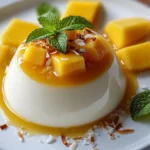
Mango Coconut Panna Cotta
- Total Time: 5 hours 25 minutes (includes chilling time)
- Yield: 6 servings 1x
- Diet: Vegetarian
Description
Mango Coconut Panna Cotta is a delightful tropical dessert that combines creamy coconut layers with fresh mango puree, creating a smooth and refreshing treat perfect for any occasion.
Ingredients
- 1 packet (2 1/4 tsp) unflavored gelatin
- 1/4 cup cold water
- 1 can (14 oz) full-fat coconut milk, divided
- 1/2 cup heavy cream
- 1/3 cup granulated sugar
- 1 teaspoon vanilla extract
- Pinch of salt
- 2 large ripe mangoes, peeled and diced (about 2 cups)
- 2 tablespoons fresh lime juice
- 2 tablespoons granulated sugar (adjust to taste)
- 1 teaspoon lime zest
- Fresh mango slices (for garnish)
- Toasted coconut flakes (optional, for garnish)
- Fresh mint leaves (for garnish)
Instructions
- Bloom that gelatin: Sprinkle gelatin over cold water in a small bowl and let it sit for 5 minutes until spongy.
- Make the coconut base: Heat 1/2 cup of coconut milk in a small saucepan until hot but not boiling. Remove from heat and whisk in the bloomed gelatin until completely dissolved.
- Combine the coconut layer: In a large bowl, whisk together the remaining coconut milk, heavy cream, sugar, vanilla, and salt. Add the warm coconut milk and gelatin mixture, whisking until sugar is completely dissolved.
- Create your mango puree: Blend diced mango with lime juice, sugar, and lime zest until completely smooth. Adjust sweetness if needed.
- First layer magic: Divide the coconut mixture among 6 serving glasses or ramekins, filling them about halfway. Refrigerate for about 2 hours until set but still slightly tacky on top.
- Add the mango layer: Spoon mango puree over each portion and create gentle swirls with a toothpick if desired.
- The final chill: Refrigerate for at least 3 more hours, ideally overnight.
- Serve like a pro: Garnish with fresh mango slices, toasted coconut flakes, and mint leaves before serving.
Notes
- Don’t let the coconut milk boil when dissolving gelatin—it can make the texture rubbery.
- The first layer should be tacky when you add the mango layer so they stick together properly.
- Fresh lime juice is crucial for brightening all those tropical flavors.
- Overnight chilling creates the silkiest texture and most confident unmolding.
- These keep beautifully covered in the fridge for up to 3 days.
- They actually improve overnight as flavors meld together.
- Don’t freeze these—the texture becomes grainy and unpleasant.
- Perfect make-ahead dessert for dinner parties or special occasions.
- Prep Time: 15 minutes
- Cook Time: 10 minutes
- Category: Dessert
- Method: Refrigeration
- Cuisine: Tropical
Nutrition
- Serving Size: 1 serving
- Calories: 350
- Sugar: 28g
- Sodium: 35mg
- Fat: 25g
- Saturated Fat: 18g
- Unsaturated Fat: 5g
- Trans Fat: 0g
- Carbohydrates: 32g
- Fiber: 2g
- Protein: 3g
- Cholesterol: 40mg

